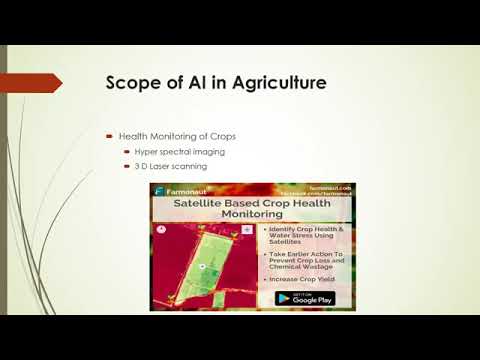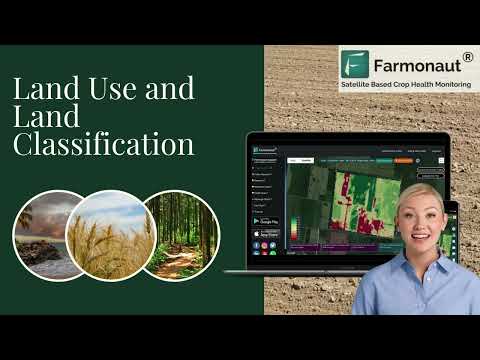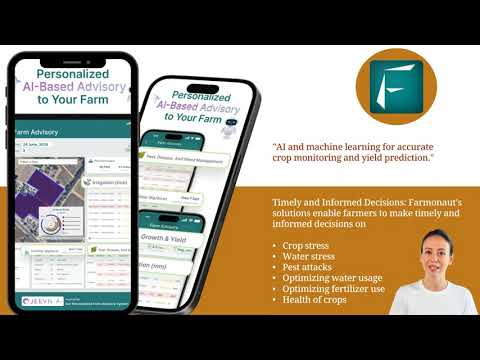Revolutionizing Yuma Agriculture: How Smart Farming and Broadband Towers Boost Crop Production
“Yuma County’s $7 million investment in seven new agricultural broadband towers aims to revolutionize farming practices.”

In the heart of Arizona’s agricultural landscape, Yuma County is embarking on a groundbreaking journey that promises to transform the way we grow food. With the approval of seven new agricultural broadband towers, we’re witnessing the dawn of a new era in farming—one where technology and tradition merge to create a more efficient, sustainable, and productive agricultural sector.
As we delve into this exciting development, it’s crucial to understand how these towers will revolutionize Yuma’s agriculture industry and potentially set a new standard for smart farming solutions across the globe. From enhancing farm WiFi technology to facilitating the integration of AI in agriculture, these towers are set to become the backbone of next-generation farming in our region.
The $7 Million Investment: A Game-Changer for Yuma Agriculture
The Yuma County Board of Supervisors has taken a bold step by approving the installation of seven additional broadband towers. This $7 million investment, funded through the ARPA (American Rescue Plan Act), is not just about improving internet connectivity; it’s about propelling our agricultural industry into the future.
Vice Chairman Jonathan Lines of the Board of Supervisors eloquently described the system as “basically WiFi for the farm, but it’s a much more robust system.” This statement encapsulates the essence of what we’re trying to achieve—bringing high-speed, reliable internet to every corner of our farmlands.
- Enhanced agriculture internet connectivity
- Support for precision agriculture technology
- Facilitation of AI in agriculture
- Boost to overall agriculture industry growth
With these new towers, we’re not just improving connectivity; we’re laying the groundwork for a technological revolution in our fields. Farmers will have access to real-time data, advanced monitoring systems, and cutting-edge tools that were once the stuff of science fiction.
The Impact of Improved Connectivity on Yuma’s Agriculture
The installation of these broadband towers is set to have a profound impact on Yuma’s agricultural landscape. Let’s explore how this enhanced connectivity will transform various aspects of farming in our region:
1. Precision Agriculture: A New Standard
Precision agriculture technology is at the forefront of modern farming, and with improved internet connectivity, Yuma farmers will be able to implement these advanced techniques with greater ease and efficiency. This includes:
- Real-time soil moisture monitoring
- Automated irrigation systems
- Precise application of fertilizers and pesticides
- Crop yield prediction and optimization
By leveraging these technologies, we can significantly reduce waste, increase crop yields, and improve the overall sustainability of our farming practices.
2. AI and Machine Learning in Agriculture
The integration of AI in agriculture is no longer a distant dream but a tangible reality for Yuma farmers. With robust internet connectivity, we can now harness the power of artificial intelligence and machine learning to:
- Analyze vast amounts of agricultural data
- Predict weather patterns and crop diseases
- Optimize planting and harvesting schedules
- Automate various farming processes
These AI-driven solutions will enable our farmers to make more informed decisions, leading to increased productivity and reduced environmental impact.
3. Enhanced Farm Management and Monitoring
With improved connectivity, farm management becomes more streamlined and efficient. Farmers can now:
- Access real-time data on crop health and soil conditions
- Monitor and control farm equipment remotely
- Implement advanced tracking systems for livestock
- Utilize drone technology for aerial surveying and crop assessment
These capabilities not only save time and resources but also allow for more precise and responsive farm management practices.
Yuma: A Testing Ground for Innovative Farming Technologies
The installation of these broadband towers positions Yuma as a prime location for testing and implementing innovative farming technologies. As Tanya Hodges, Executive Director at the University of Arizona, points out, “The world is getting hotter and dryer, and Yuma is the example. There are people coming in and wanting to learn more about how we grow with less water.”
This unique position allows Yuma to become a hub for:
- Agricultural research and development
- Testing of new farming technologies
- Collaboration between local farmers, universities, and international ag-tech companies
- Development of sustainable farming practices
By serving as a real-world laboratory for advanced agricultural techniques, Yuma is not only securing its own future but also contributing to global food security in the face of climate change.
Water Conservation: A Critical Focus
“Yuma’s agricultural advancements in water conservation are attracting global attention due to increasingly hot and dry conditions worldwide.”
One of the most significant challenges facing agriculture today is water scarcity. Yuma’s focus on agricultural water conservation techniques is not just a local concern but a global imperative. The new broadband infrastructure will play a crucial role in implementing and refining water-saving strategies:
- Smart irrigation systems that adjust water usage based on real-time soil moisture data
- Precision application of water to reduce waste and improve efficiency
- Advanced weather forecasting to optimize watering schedules
- Monitoring and analysis of water usage patterns to identify areas for improvement
By leveraging technology to conserve water, Yuma is setting an example for arid regions worldwide on how to maintain agricultural productivity in the face of increasing water scarcity.
The Role of Smart Farming Solutions in Yuma’s Agricultural Future
Smart farming solutions are at the core of Yuma’s agricultural transformation. These technologies, powered by the new broadband infrastructure, will enable farmers to:
- Implement data-driven decision-making processes
- Reduce the environmental impact of farming activities
- Increase crop yields while minimizing resource usage
- Adapt more quickly to changing environmental conditions
By embracing these smart farming techniques, Yuma’s agricultural sector is positioning itself at the forefront of sustainable and efficient food production.

Comparison: Before and After Broadband Towers
| Agricultural Aspect | Before Broadband Towers | After Broadband Towers |
|---|---|---|
| Internet Connectivity | Limited coverage (est. 40%) | Extensive coverage (est. 90%) |
| Precision Agriculture Implementation | Manual monitoring | Real-time data collection and analysis |
| Water Conservation | Traditional irrigation methods | Smart irrigation systems with AI-driven optimization |
| AI Integration | Limited or non-existent | Widespread use in crop management and decision-making |
| Research Collaboration | Localized efforts | Global partnerships and real-time data sharing |
This comparison clearly illustrates the transformative impact of the new broadband towers on Yuma’s agricultural landscape. The shift from traditional to smart farming practices is evident across all aspects of agriculture, from basic connectivity to advanced research collaborations.
The Global Significance of Yuma’s Agricultural Advancements
As we implement these advanced technologies and sustainable farming practices, Yuma is becoming a model for agricultural innovation worldwide. Our efforts in water conservation, precision agriculture, and AI integration are attracting attention from:
- International agricultural organizations
- Governments facing similar climate challenges
- Global agri-tech companies looking to test and implement new technologies
- Research institutions studying sustainable farming practices
This global interest not only validates our approach but also opens up opportunities for knowledge sharing and collaboration on a worldwide scale.
The Future of Food Production in Yuma
As we look to the future, the impact of these broadband towers on food production in Yuma cannot be overstated. We anticipate:
- Increased crop yields through optimized farming practices
- Greater diversity in crop types due to more precise environmental control
- Improved food quality through better monitoring and management
- Enhanced food safety with advanced tracking and traceability systems
These advancements will not only benefit local consumers but also strengthen Yuma’s position as a critical food producer for the nation and beyond.
Challenges and Considerations
While the future looks bright, it’s important to address potential challenges:
- Training and education for farmers to effectively use new technologies
- Ensuring data security and privacy in an increasingly connected farm environment
- Balancing technological advancements with traditional farming wisdom
- Managing the initial costs of implementing new systems and technologies
Addressing these challenges will be crucial for the successful integration of smart farming solutions in Yuma’s agricultural landscape.
The Role of Farmonaut in Smart Farming
In the context of Yuma’s agricultural revolution, innovative companies like Farmonaut are playing a crucial role in advancing smart farming practices. Farmonaut offers advanced, satellite-based farm management solutions that align perfectly with Yuma’s vision for the future of agriculture.
Farmonaut’s platform provides valuable services such as:
- Real-time crop health monitoring
- AI-based advisory systems
- Resource management tools
These technologies complement the enhanced connectivity provided by Yuma’s new broadband towers, enabling farmers to make data-driven decisions and optimize their farming practices.
Explore Farmonaut’s solutions:
For developers interested in integrating Farmonaut’s technology into their own solutions, explore the Farmonaut API and API Developer Docs.
Community Engagement and Education
As we embrace these technological advancements, it’s crucial to engage and educate our community. We’re implementing several initiatives to ensure that everyone can benefit from and contribute to this agricultural revolution:
- Workshops and training sessions for farmers on new technologies
- Partnerships with local schools to introduce agricultural technology in the curriculum
- Community events showcasing the latest in smart farming solutions
- Collaboration with the University of Arizona to conduct research and disseminate findings
By involving the entire community, we’re ensuring that the benefits of these advancements are widely shared and understood.
Economic Impact on Yuma County
The installation of these broadband towers and the subsequent technological advancements are expected to have a significant positive impact on Yuma County’s economy:
- Creation of new jobs in the agri-tech sector
- Increased agricultural productivity leading to higher revenues
- Attraction of new businesses and investments in the region
- Potential for agri-tourism focused on innovative farming practices
This economic boost will not only benefit those directly involved in agriculture but will have ripple effects throughout the entire community.
Environmental Sustainability
One of the most exciting aspects of this technological revolution is its potential to enhance environmental sustainability in our agricultural practices:
- Reduced water usage through precision irrigation
- Decreased reliance on chemical pesticides and fertilizers
- Lower carbon footprint through optimized farm operations
- Better land management practices informed by real-time data
By embracing these eco-friendly approaches, Yuma is not only securing its agricultural future but also contributing to global efforts in combating climate change.
The Road Ahead: Yuma’s Vision for Agriculture
As we look to the future, Yuma’s vision for agriculture is clear:
- To become a global leader in smart, sustainable farming practices
- To continue innovating and adapting to changing environmental conditions
- To ensure food security while minimizing environmental impact
- To foster a thriving agricultural community that embraces technology and tradition
With the installation of these broadband towers, we’re taking a significant step towards realizing this vision, setting an example for agricultural regions worldwide.
Conclusion: A New Chapter in Yuma’s Agricultural Story
The installation of seven new agricultural broadband towers in Yuma County marks the beginning of an exciting new chapter in our agricultural story. By embracing smart farming solutions, enhancing agriculture internet connectivity, and implementing precision agriculture technology, we’re not just improving our farming practices—we’re revolutionizing them.
As we move forward, the integration of AI in agriculture, the focus on sustainable farming practices, and the commitment to water conservation will position Yuma as a model for modern, efficient, and environmentally responsible agriculture. The global attention we’re receiving is not just a testament to our innovation but also a responsibility to continue leading the way in agricultural advancements.
The future of farming in Yuma is bright, connected, and sustainable. As we embrace these new technologies and practices, we’re not just securing our own future—we’re contributing to global food security and setting a new standard for agriculture in the 21st century.
FAQ Section
Q: How will the new broadband towers benefit Yuma farmers?
A: The towers will provide enhanced internet connectivity, enabling farmers to implement precision agriculture techniques, use AI-driven farming solutions, and access real-time data for better decision-making.
Q: What is precision agriculture, and how does it work?
A: Precision agriculture uses technology to optimize crop yields and reduce waste. It involves using sensors, GPS, and data analytics to make informed decisions about planting, irrigation, and harvesting.
Q: How will these advancements help with water conservation?
A: Smart irrigation systems, enabled by the improved connectivity, can precisely control water usage based on real-time soil moisture data, significantly reducing water waste.
Q: Will these changes affect the cost of produce for consumers?
A: While initial implementation costs may be high, the long-term effects are expected to increase efficiency and potentially lead to more stable produce prices.
Q: How can local farmers learn to use these new technologies?
A: The county and local institutions like the University of Arizona are planning workshops and training sessions to help farmers adapt to and utilize these new technologies effectively.
Farmonaut Subscriptions







